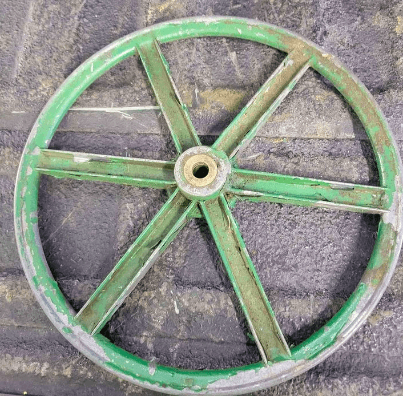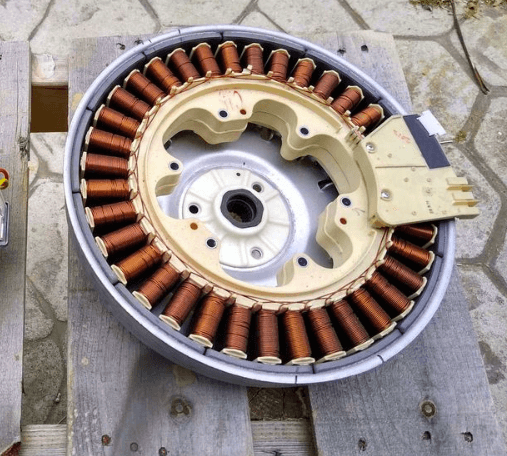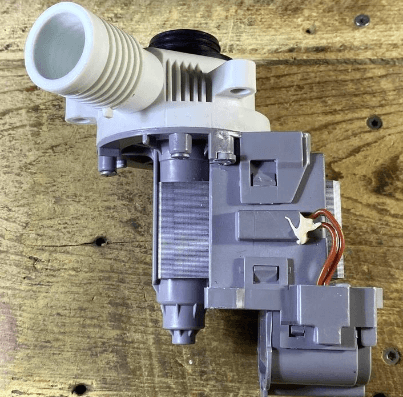You don’t want to wait until suds are all over the floor in your laundry room, so if your washing machine starts to make some noise, don’t just assume that it’s a tiny problem – it’s time to fix it. Fast!
If you’re thinking, “How can I fix a noisy washer on my own?” Well, before you call your manufacturer or a technician, we have curated a few fixes you can attempt to bring your washer back to normal. If it still doesn’t work well afterward, feel free to make that call.
Right now, if your washer is making some funny sounds, we have explained the causes and possible fixes for the issue below. Keep reading.
How Do You Fix a Noisy Washing Machine?

There’s no clear-cut solution to this particular problem. Many washing machines have slightly different operation modes, so anything could be the problem – from faulty suspensions to squeaky ball bearings. One of the most common causes of loud noises in washing machines is foreign objects like coins stuck and moving about in the washing machine drum.
Coins and other objects in your washing machine are noise makers, but their presence in the washer drum is potentially dangerous as they can enter moving parts in your washer and wreak havoc on it. So you may want to stop your machine and fish the foreign object out.
This is just the most common scenario; we have outlined other frequently occurring problems and possible fixes below. Take a peek:
Washer Makes a Lot Of Noise While Spinning
If your washing machine is making noises while spinning, especially if it’s a clanking or scratching noise, it’s possible that some foreign material has gotten into the filter or is simply spinning around in the drum. Coins, buttons, and other small objects are common culprits.
Empty the drum and make sure to fish out and remove any foreign objects there. If you don’t find any object in the washer drum, then you may need to look beneath the rubber seal.
Objects caught in the lint filter could also be the source of the noise, so you may need to clean it out. If you don’t know where the lint filter is, your owner’s manual can be of help here.
After opening the lint trap, clean it well to prevent it from plugging up in the future. Soak it in warm water with laundry detergent for 10 minutes, then wipe it off with a paper towel and clean around the washer’s housing.
Washer Makes a Lot Of Noise While Agitating
You hear those noises when your washer is agitating (right?). This could be due to a faulty drum bearing. The drum bearing is a mechanical device that allows your washer drum to rotate about an axis smoothly, without friction, and most importantly, noiselessly. When your washer makes noise while agitating, it’s time to check up on the ball bearing.
To check, turn the washer off and spin the drum by hand to see if it makes some noise (usually rambling). If you hear noises, you know you have a faulty drum bearing. Replacing a faulty drum bearing is a job best left to the professionals. Otherwise, you risk affecting the lifespan of your washing machine. So unless you’re an expert, we recommend calling your manufacturer or a technician if your warranty period has elapsed.
Washer Makes a Lot Of Noise While Filling With Water
This could sound strange, but your washer could be making weird noises while filling with water. Typically, a faulty inlet valve could be blamed for it. Other signs of a faulty supply valve are slow filling or the inability to fill your washer with water.
Thankfully though, this is a problem that’s easy to fix even if you’re not technically inclined. To do this, however, you may need to buy a replacement inlet valve for your machine.
How to Replace Your Washer Inlet Valve Like a Pro
Depending on the style of your washing machine, the process of replacing the inlet valve may vary slightly. You will need first to locate the console panel to begin, so if you have no idea where it is, check your user’s manual, then proceed with the instructions below:
- You will find two screws holding the console: one on the left and the other on the right. Loosen the console with Philip’s head screwdriver.
- Remove the console or simply tilt it away to prevent it from interfering with your work.
- Detach the harness holding the lid switch assembly.
- After removing the console head, look for the brass clips on the right and left sides of the machine, which should now be exposed.
- Pull the shell towards you after unclipping the clips. You should be able to remove it easily.
- You should now see the water inlet valve directly across from you, which is normally just above the rim of the tub.
- Remove the inlet valve clip by disconnecting it and shifting it up and out.
- Replace the inlet valve with a new one.
Other Reasons Your Washer May be Making Loud Noises
Other factors – which are better left to a professional – may be at fault, making your washer whine, growl, and grumble during a washing cycle. Here they are:
Faulty Drive Pulley

If the drive pulley is faulty, your washer will make those loud noises during a spin. The drive pulley rides on the belt and gives the washer drum a spin. To be sure, you would have to take the washer apart and inspect the pulley, so we recommend calling a technician to do this.
Faulty Motor Coupling

Your washer’s motor coupling connects the washer’s transmission to the motor. It’s composed of plastic and designed to break if the washer gets loaded above capacity. It is a safety feature that prevents damage to the motor and transmission of your washing machine.
Faulty Clutch
The clutch is a component in your washer that connects the internal wash tub to the transmission and lets the drum reach the perfect speed in a gradual fashion. A faulty clutch will generate a lot of noise when the machine is in operation. But thankfully, it’s easily replaceable.
Faulty Drain Pump

When the drain pump gets clogged, you might hear some noises at intervals as the washer operates. This is because your washing machine may need to drain water via the drain pump mid-cycle. If there’s a clog, then, we’re afraid, it will protest by giving off a weird sound. Not only that, your clothes may not launder properly, so this is equally a serious issue.
Luckily, you can remedy this problem by taking out the drain pump and cleaning it out. You may need to consult your user manual to locate the drain pump before you get to work cleaning it.
Nobody likes to have a breakdown in the middle of a washing cycle, but it happens. While you wait for a technician to arrive, you need to move on – see how to do the laundry without using a washer.
Why Is My Washing Machine So Loud And Shaking?
Is your washing machine vibrating or moving during a cycle? That may also cause it to make unnatural sounds. There are a few causes and possible solutions to this. Take a peek:
1. Remove the Protective Styrofoam And Transportation Bolts
The protective Styrofoam is there to protect the unit during transportation. Once they arrive in your house, there’s no further use for the styrofoam – the same applies to the transportation bolts which you can find at the back of the washer. To remove the transportation bolt, simply pull it out. You will find the Styrofoam underneath the unit; just pull it out.
2. Ensure That The Washer Is Balanced
To work effectively, your washing machine must be balanced on its feet, or else it will vibrate and tremble. Try rocking the unit back and forth. If it rocks, your washer’s feet or the flooring may be uneven.
Check the appliance’s balance with a spirit level and adjust the lock nuts on the feet under your washing machine. Loosen them and rotate the feet counterclockwise or clockwise until they’re securely planted on the ground. Tighten all lock nuts by hand once more.
3. Balance Out The Load
If you’re washing bulky items like blankets and rugs, don’t just toss them into the washing machine all by themselves; add a few more items to cushion the force they may create when the drum starts to spin.
